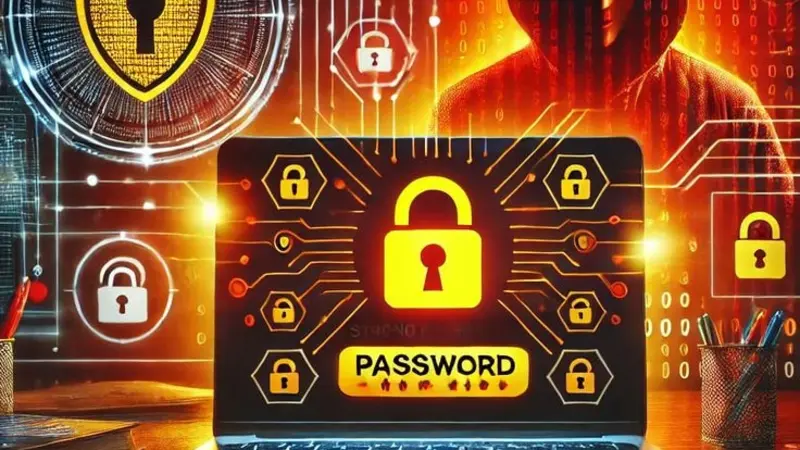Overview
Linux gaming has grown significantly in recent years, yet many gamers face stutters, inconsistent FPS, and input lag despite having powerful hardware. Therefore, knowing advanced system optimizations is essential. Tech hacks pblinuxgaming provide a structured approach to improving performance by combining GPU tweaks, kernel adjustments, desktop environment optimizations, and network improvements. Furthermore, these hacks help both new and experienced Linux gamers maximize their systems’ potential.
Moreover, adopting these techniques allows you to maintain stability while achieving higher FPS, faster load times, and smoother gameplay. Consequently, this guide explores practical strategies, system-level adjustments, and automation workflows that deliver measurable improvements.
What Are Tech Hacks PBlinuxgaming?
In simple terms, tech hacks pblinuxgaming are advanced performance optimizations designed specifically for Linux gaming. These hacks focus on improving system responsiveness, reducing micro-stutters, and enhancing game compatibility. Additionally, they cover GPU performance, CPU scheduling, RAM and swap management, Proton/Wine configurations, and online network tuning.
Because these optimizations are both reversible and safe, gamers can experiment without risking hardware or system stability. Moreover, they work across popular Linux distributions like Ubuntu, Pop!_OS, Fedora, and Manjaro, making them versatile for different setups.
Why Linux Gamers Need Advanced Optimization
While Linux is known for stability, default configurations often prioritize reliability over raw gaming performance. As a result, games may experience inconsistent FPS, delayed input response, or longer load times. Therefore, advanced tweaks become crucial for serious gamers.
Furthermore, these optimizations are particularly beneficial for users running Windows games through Proton or Wine, as misconfigured layers can reduce performance. In addition, combining multiple hacks produces cumulative improvements, ensuring smoother gameplay and more efficient resource utilization.
System-Level Optimizations for Linux Gaming Tech Hacks PBlinuxgaming
Below are the most impactful system-level hacks for improving Linux gaming performance.
1. GPU Driver Tuning Tech Hacks PBlinuxgaming
Your GPU determines how efficiently games render visuals. Consequently, driver optimization is critical for maximizing FPS and reducing lag.
NVIDIA Users
-
Switch to performance mode for consistent rendering.
-
Enable threaded optimization to enhance multithreading.
-
Activate low-latency pipelines for competitive games.
AMD Users
-
Enable Async Compute to improve GPU efficiency.
-
Adjust power profiles for performance stability.
-
Optimize Vulkan environment variables for better GPU utilization.
Moreover, correctly tuned drivers prevent bottlenecks, ensuring your games run smoothly even under heavy load.
2. Kernel Scheduling Tweaks Tech Hacks PBlinuxgaming
The Linux kernel manages process scheduling. Therefore, optimizing it can significantly impact performance.
Recommended Adjustments
-
Enable performance CPU governor to prioritize speed.
-
Reduce latency settings for smoother responsiveness.
-
Adjust CPU frequency scaling for consistent frame pacing.
-
Optimize I/O schedulers for faster data access.
As a result, games feel smoother, and input lag is minimized. Additionally, these tweaks benefit both high-end and mid-range systems.
3. RAM and Swap Optimization Tech Hacks PBlinuxgaming
Memory management is critical for modern games. Improper swap settings may lead to stutters or slow load times.
Practical Adjustments
-
Reduce swappiness to limit unnecessary disk usage.
-
Use zRAM for faster memory compression.
-
Enable hugepages to improve memory-intensive applications.
Consequently, your system becomes more responsive, particularly during resource-heavy gaming sessions. Furthermore, optimized memory management reduces wear on SSDs.
4. Proton and Wine Configuration
Running Windows games through Proton or Wine can introduce performance challenges. Therefore, proper configuration is essential.
Effective Tweaks
-
Choose the Proton version best suited for each game.
-
Enable FSR or DLSS for higher performance with minimal FPS loss.
-
Override DLLs to improve game compatibility.
-
Apply game-specific launch options for smoother execution.
Because Proton acts as a translation layer, optimizing it ensures near-native performance. Moreover, it allows older titles to run efficiently on modern Linux distributions.
5. Safe GPU Overclocking
Slight GPU overclocking can boost performance but must be done carefully.
Best Practices
-
Increase core clock gradually while monitoring stability.
-
Apply minor memory overclocks to improve rendering speed.
-
Maintain proper fan curves to avoid overheating.
As a result, small overclocks can provide noticeable FPS improvements. Furthermore, combining overclocking with driver optimizations maximizes GPU efficiency.
Desktop Environment Optimization
Desktop environments (DEs) can affect performance. Heavy environments consume CPU and GPU cycles, reducing resources for games.
1. Switch to Lightweight Environments
Lightweight DEs reduce overhead, freeing resources for gaming. Options include:
-
XFCE
-
LXQt
-
KDE Plasma (with effects minimized)
Consequently, your games run smoother, and system responsiveness improves. Moreover, lighter DEs often boot faster and reduce background CPU load.
2. Disable Background Services
Many Linux services consume system resources silently. Therefore, disabling unneeded processes improves performance.
Services to Disable
-
Indexing and search daemons
-
Auto-sync apps
-
Tracker services
-
Heavy widgets or extensions
As a result, CPU cycles are dedicated to gaming tasks. Furthermore, system temperature and power consumption decrease, contributing to overall efficiency.
3. Window Manager Tweaks
Compositing and animations can affect frame consistency. Recommended adjustments:
-
Disable VSync when unnecessary
-
Turn off transparency effects
-
Reduce or remove animations
-
Switch to lightweight compositors
Therefore, frame rates are more consistent, and input response is faster. Moreover, these tweaks are particularly valuable in competitive online games.
Network Optimizations for Online Gaming
Network latency can drastically affect gameplay. Therefore, optimizing your network stack improves both speed and stability.
1. Use Faster DNS Servers
Selecting optimized DNS servers reduces lookup times. Consequently, online games load faster, and connections become more stable.
2. Kernel-Level Network Tweaks
Linux allows adjustments to TCP/UDP buffers and congestion control. Key improvements:
-
Reduce TCP latency
-
Increase buffer sizes
-
Fine-tune congestion control algorithms
As a result, packet transmission is smoother, reducing lag and packet loss. Moreover, these tweaks benefit all types of online gaming, from casual to competitive.
3. Router-Level Prioritization
Setting your Linux PC as a high-priority device on the router improves stability. Therefore, other devices have minimal impact on your connection. Additionally, enabling Quality of Service (QoS) ensures critical gaming traffic receives priority bandwidth.
Advanced Gaming Performance Tricks
For power users, these hacks further enhance Linux gaming performance.
1. Feral Gamemode and MangoHUD
Feral Gamemode dynamically optimizes CPU governors and minimizes background tasks during gaming. MangoHUD displays real-time metrics such as FPS, frametime, and GPU usage.
Consequently, you gain both control and insight into system performance. Moreover, these tools work across multiple Linux distributions and improve monitoring accuracy.
2. Async Shader Compilation
Games compiling shaders during play can stutter. By enabling asynchronous shader compilation, these interruptions are minimized. As a result, even shader-heavy titles maintain consistent FPS, improving overall experience.
3. Vulkan vs OpenGL Choice
Vulkan typically offers lower overhead compared to OpenGL. However, some older games perform better with OpenGL. Therefore, testing both APIs ensures optimal performance per title. Furthermore, Vulkan optimizations reduce CPU bottlenecks in modern gaming.
4. Config File Tweaks for Tech Hacks PBlinuxgaming
Many games have hidden configuration options. Adjustments can:
-
Reduce micro-stutter
-
Improve texture streaming
-
Enhance input responsiveness
-
Unlock FPS ceilings
By fine-tuning configs, you can maximize performance beyond default settings. Moreover, careful testing ensures system stability while delivering higher FPS.
Automation Workflows for Tech Hacks PBlinuxgaming
Automation is a key component of tech hacks pblinuxgaming. Scripts and profiles streamline optimization tasks, saving time and ensuring consistency.
1. Optimization Scripts for Tech Hacks PBlinuxgaming
Scripts can automatically:
-
Switch CPU to performance mode
-
Kill background tasks
-
Set GPU parameters
-
Launch games with custom flags
Consequently, pre-game optimization becomes automatic. Furthermore, this ensures repeatable, stable system behavior before every gaming session.
2. Game Mode Profiles for Tech Hacks PBlinuxgaming
Profiles allow custom optimizations for different game types:
-
FPS
-
RPG
-
Emulators
-
VR
By automatically switching profiles, your system is always optimized for the current game. Moreover, this approach maximizes performance without manual intervention.
Common Mistakes to Avoid When Applying Tech Hacks PBlinuxgaming
Even experienced Linux users make mistakes that reduce performance. Avoid:
-
Using outdated GPU drivers
-
Running games on HDD instead of SSD
-
Enabling too many startup services
-
Overly aggressive kernel tweaks
-
Ignoring temperature limits
By avoiding these mistakes, your system remains both stable and fast. Furthermore, proper implementation ensures long-term reliability.
Conclusion
In conclusion, tech hacks pblinuxgaming provide a comprehensive framework for improving Linux gaming performance. Through GPU tuning, kernel scheduling, RAM management, network optimization, desktop environment adjustments, and automation workflows, you can unlock the full potential of your system. Moreover, combining these hacks creates smoother, faster, and more responsive gameplay. Ultimately, these strategies help you enjoy a polished Linux gaming experience with higher FPS, reduced latency, and better system efficiency.


